by Wallace Wyss –
I remember visiting a guy in Newport Beach about 30 years ago who was a Can-Am racer. I went over there with some Ferrari owning friends and they felt sorry for him because all he had in his collection in the way of Ferraris was a Ferrari 250 GT Lusso.
I felt sorry for him too, because, as far as Ferrari 250s go, that model was known at the time as strictly a boulevard car with no racing potential, and therefore little investment potential. Now that Lussos are worth around a million up, depending on history. I no longer feel sorry for the old Can Am-er.
The Ferrari 250 GT Lusso prototype, chassis 3849GT, was unveiled at the 1962 Paris Auto Show, and was an attempt to build a sort of luxury car that would be more refined than the already existing 250 SWB (short wheelbase berlinetta).
The Lusso was a luxurious car with full leather, and a sort of luggage tray behind the two bucket seats to carry fitted luggage if you were planning on grand touring. The bodywork was by Pininfarina.
Scaglietti, Ferrari’s in house coachbuilder, bodied the cars and created another Ferrari 250 GT Lusso prototype, chassis 4053 GT, with changes that would make the show car more suitable for production. The production run itself was very short, beginning in January of 1963 and ran to about August of 1964.
One reason the Lusso had little competition potential was that the body was steel with only the doors, hood, and trunklid wrought from aluminum. The grille and headlights were similar to those on the SWB, but the front fenders were narrower and elongated.
Really clever were the chrome bumper guards that swept up to protect the body and nestle the front turn signals protectively. A bit of a mystery was the scoop which might have been necessary to clear the carburetors but appears to be blocked off. Having something fake on a Ferrari is unusual but, hey, sometimes you need a scoop to clear a carburetor but don’t really need any air intake (which, if truth be told, is a problem in the rain).
The rear roofline was similar to some Superamerica prototypes, a very thin set of rear pillars. The tail had the Kamm effect spoiler built in. What really set the style for a generation of Ferraris were the flat surfaced rounded edge turn signals.
NOT A RACE CAR THOUGH THE BODY WAS THE BASIS FOR ONE
The Ferrari 250 GT Lusso chassis was descended from the very successful race car, the Ferrari 250 GTO, with the same wheelbase of 94.5 inches (2400mm). which is one reason why, when 250GTOs began rocketing in price some shabby Lussos were bought to convert to 250GTO bodywork. Though I say it was not a racing car, one Lusso had a GTO nose (and other shops may have added them after they were used cars) and another was the body for the 330LMB, which though a front engine car, was no slouch at Le Mans.
The racing potential of the stock car was hurt by having the engine further forward compared to other 250s, more room inside but bad for weight distribution and cornering.
Lusso engines are identified as the Type 168/U. The block was common to all 250s. Some bits such as the valves and crankshaft came from the Ferrari 250 SWB parts bin, others like the cylinder heads and pistons, came from the strictly touring only model, the Ferrari 250 GTE. The result was a very solid 250 horsepower at 7000 rpm, which made all the right sounds but was nowhere near powerful enough to make it a racer like the 250 GT SWB.
The instrument panel is controversial even five plus decades later because the supplemental gauges are in front of the driver and the speedometer and tachometer in the center of the dash, which must have been some scheme to make it possible to adapt the car more easily to right drive but it is disconcerting.
Six to ten Lussos were delivered with British calib instruments (refers to mph, psi, etc. calibration of instrumentation rather then km/h, Centigrade, etc.) Naturally RHD British versions are rarer on the ground and should be worth more, so those Yanks that bought a RHD version stateside can now profit by selling it for more on the Old Sode or in Australia.
One of the rarest is that built especially for the owner of Pininfarina, Battista Pininfarina himself. His car had a different roofline and different lighting. His car was even different from one side to the other–common in clay models where you want to get “two for the price of one” in seeing what an idea looks like in the full size car. It was displayed at the 1963 London Motor Show.
One British engineer who was a consultant to Ferrari on race cars disputed the oft-quoted production number of 450 plus and painstakingly poured over factory records until he logged around 350 Lussos, which, on numbers alone, makes it a very rare car, much rarer than a Mercedes Gullwing for example.
According to the website Ferrari-ForSale the first production Lusso was S/N 4103 GT while they say the last one was 5955GT.
The image of Lussos as a namby pamby tourer was improved recently when one that belonged to a very memorable owner, Steve McQueen, was sold for $2.31 million, far beyond what they usually sold for at the time.
The argument that the Ferrari 250 GT Lusso is “the most beautiful street Ferrari” is strong. There is a longer hood, than tail, which is part of the grand touring tradition. It has a Kamm effect tail, typical of many of the factory race cars of the era. It was the first to initiate that style taillamp on a Ferrari.
The Ferrari 250 GT Lusso has just the right amount of chrome, not enough to be garish but just enough to highlight the paint, especially in a dark-colored version. Plus the fact the Lusso has not dated; not a whit, unlike later cars like the Testarossa, whose side strakes were a mistake even when new. The original Lusso is a simple timeless design depending not on any momentarily popular trend of the time but on its beautiful shape for its appeal.
If you can only own one V-12 Ferrari, and want it to be as beautiful as it is fast, this could be the one….
Let us know what you think in the Comments about the Ferrari 250 GT Lusso.
THE AUTHOR/ARTIST: Wallace Wyss, of Ontario, CA, says a 12″ x 16″ giclee print on canvas of the lead illustration is available. Interested parties may write litamakati2@gmail.com.
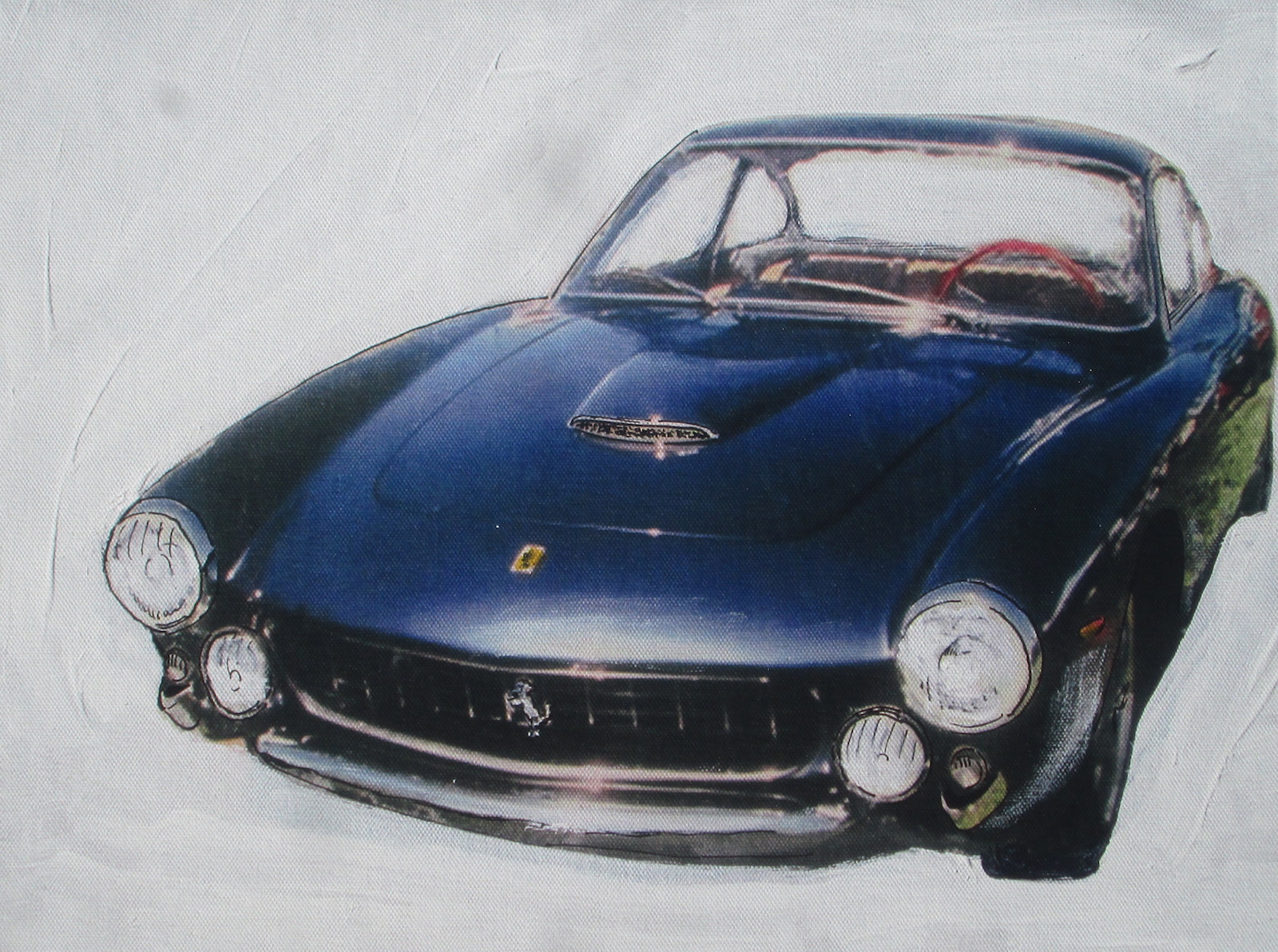
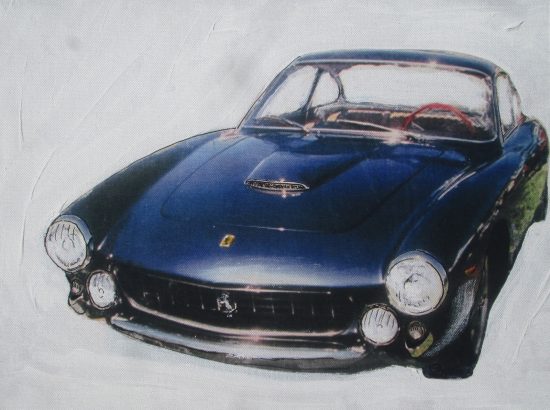
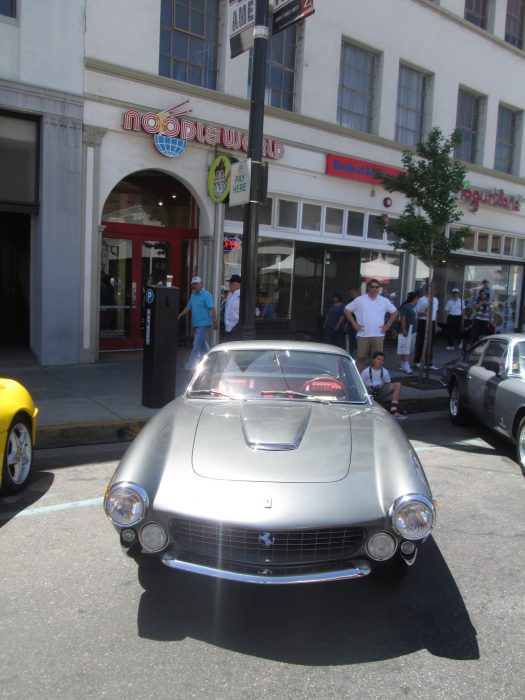
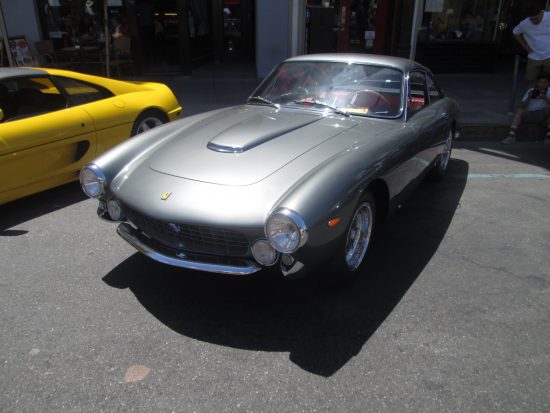

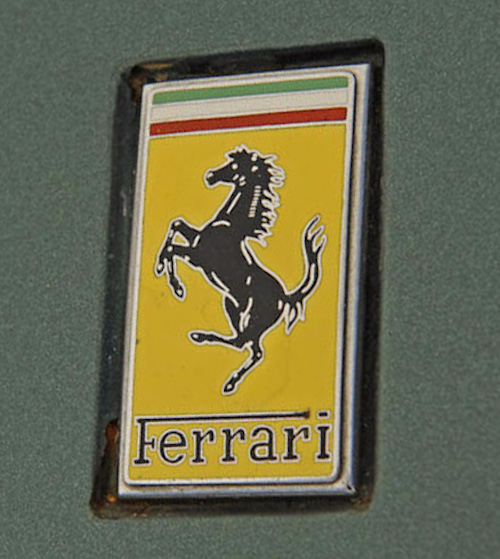
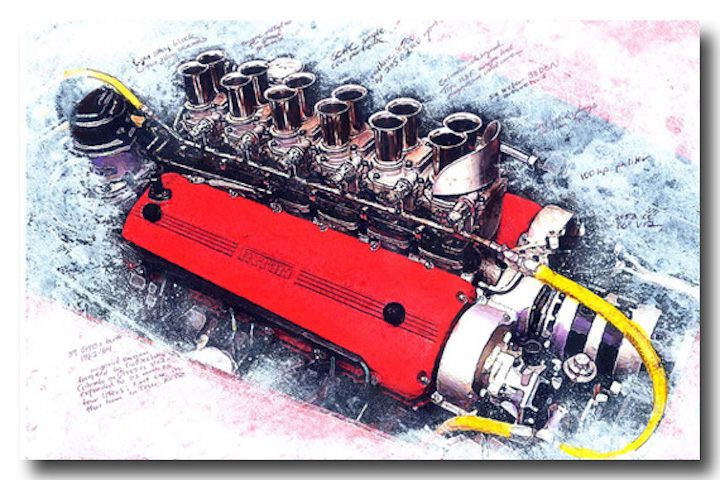

Mike, the 250 GT Lusso is probably in my top five cars that I would love to own and in my opinion, probably the most beautiful Ferrari ever made. A dream car for me. I was at an art gallery in the Cannery in San Francisco back in the early 1980’s and there was a framed, limited edition lithograph of a Lusso by Harold James Cleworth, who does almost photo realistic renderings of certain cars. I purchased that lithograph and still own it to this day. It is the closest thing to a real Lusso that I will ever own and it is a joy to behold. If I hit the lotto some day, a Lusso is first on my list of dream cars to own.
I consider the 250 GT Lusso as the most perfectly designed car ever.
I guess if it had a flaw..it a had a straight rear axle.